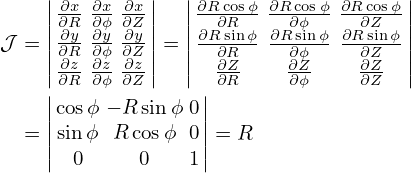
The gradient of a scalar function f(ψ,𝜃,ζ) is readily calculated from the chain rule,
 | (102) |
Note that the gradient of a scalar function is in the covariant representation. The inverse form of this expression is obtained by dotting the above equation respectively by the three contravariant basis vectors, yielding
 | (103) |
 | (104) |
 | (105) |
Using Eq. (102), the directional derivative in the direction of ∇ψ is written as
 | (106) |